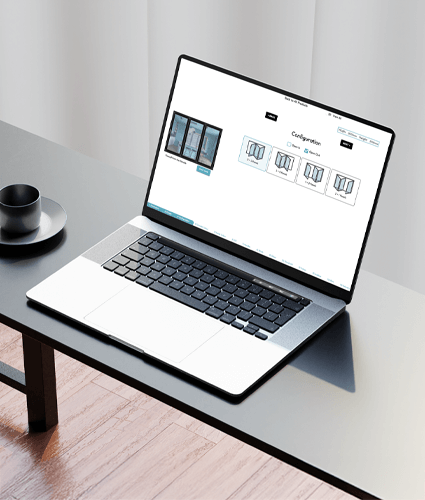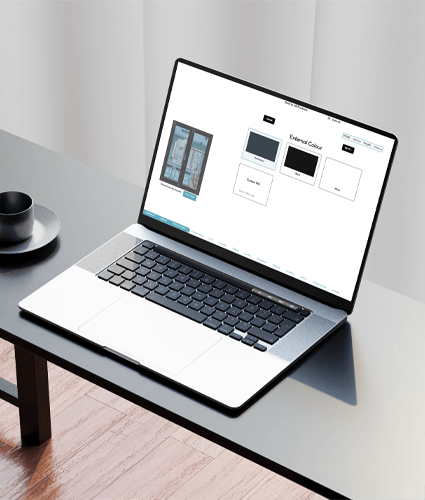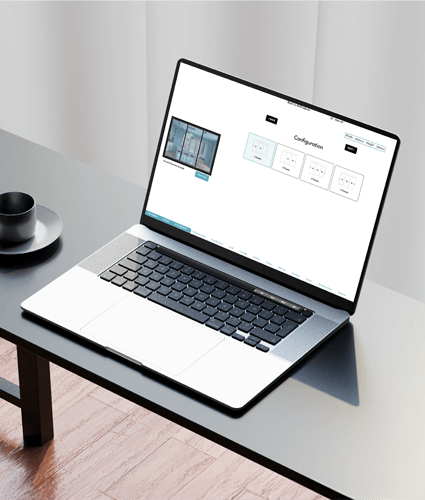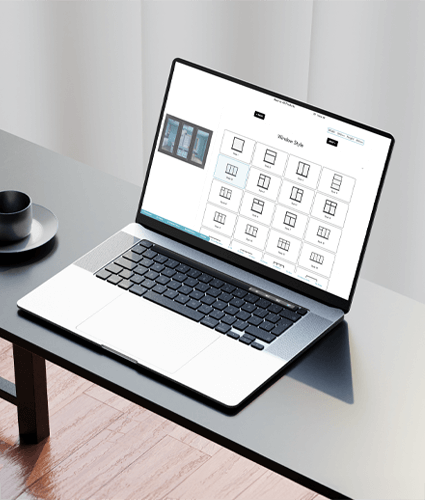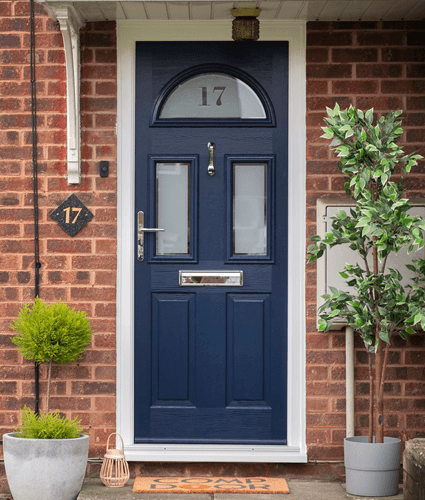When winter hits, keeping your home warm is a top priority for many of us. Good thermal insulation makes all the difference, keeping your living space cosy and comfortable. In this blog, we’ll look at how bifold doors can help you retain heat, plus share some practical tips to boost your energy efficiency. Find out about the different bifold energy ratings and discover the most energy-efficient bifold doors on the market.
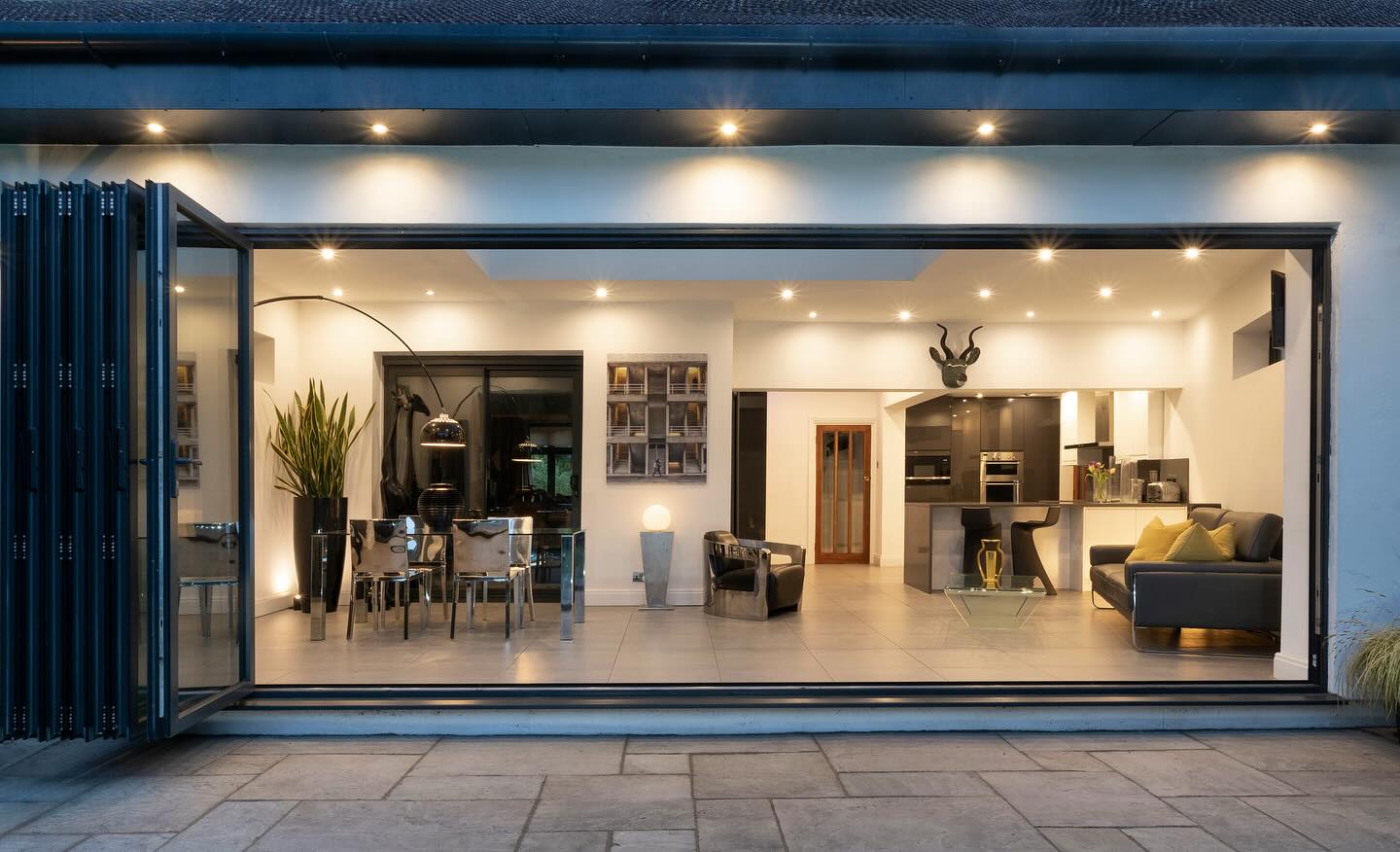
Why is it important to check a bifold door is thermally efficient before buying it?
Checking if bifold doors are energy-efficient before buying them is essential for several reasons:
-
Cost: Poor insulation means higher heating bills. High-quality bifold doors can help lower your energy bills by keeping the heat in.
-
Warmth: Energy-efficient doors make your home warmer and more comfortable.
-
Temperature Control: Good thermal performance helps maintain a steady temperature, keeping your home cooler in the summer and warmer in the winter.
The Energy Saving Trust highlights the benefits of thermally efficient windows and doors, including potential savings on your energy bills if you upgrade old doors and windows.
Do bifold doors make your home feel cold or draughty?
When installed correctly, modern bifold doors aren’t draughty and won’t make your room cold. High-quality bifold doors help control heat loss, keeping your home warm. They’ll only be draughty if they’re poorly fitted or not closed properly.

What does Thermal Insulation mean?
Thermal insulation minimizes heat transfer between spaces by creating a barrier. It helps combat the cold, reduce energy costs, and boost property value. With features like airtight seals and various glazing options, bifold doors play a crucial role in energy efficiency and effective temperature control.
What does U-Value mean for bifold doors?
If you’ve researched bifold doors, you might have come across the term “u-value”. This measures the rate at which heat passes through the door’s materials, including glass and framework, expressed in W/m²K. Simply put, a lower u-value means better insulation against heat loss or gain. Knowing the u-value of your bifolding door is crucial for achieving optimal thermal performance and meeting regulations. For instance, some building codes for new builds, extensions, and replacements require a specific u-value to ensure adequate insulation.
How thermally efficient are aluminium bifold doors?
Even though aluminium is a conductive material, modern aluminium bifold doors can be very thermally efficient. They feature a thermal break within the frame that prevents heat from escaping. This is achieved by adding materials with low thermal conductivity into the frame, separating the two sides. This ‘break’ stops the heat from passing through, effectively insulating the frame. So, with the use of thermal breaks, aluminium bifold doors offer excellent thermal efficiency.
Besides their thermal performance, aluminium bifold doors are lightweight, sturdy, and durable. They bring numerous benefits without compromising on energy efficiency, making them a great choice for any home.
How energy-efficient are bifold doors?
Bifold doors open by folding their panels together in a concertina style, often used to separate indoor and outdoor spaces while providing an unobstructed view and welcoming light into the room. But how do they help retain heat in your home?
-
Large Glass Panels: Unlike traditional doors, bifold doors feature large glass panels. The type of glazing used, along with any low-emissivity coatings, impacts heat retention and solar gain.
-
Sealing Mechanism: The sealing mechanism, including weatherstripping and gaskets, ensures a tight seal when closed. A professional installation can minimise air infiltration and reduce heat loss or gain.
-
Insulation Materials: Materials like insulated glass units, thermal breaks, and energy-efficient components all contribute to their overall thermal performance.
-
U-Value: This value, also known as thermal transmittance or thermal conductivity, measures how well the materials insulate against heat loss or gain. The lower the u-value, the better the thermal insulation.
To sum up, while other door options may offer thermal benefits, bifolding doors excel by combining beautiful design with excellent thermal performance. Their heat retention properties are influenced by the choice of material, glazing options, and sealing mechanisms, making them a popular choice for those looking to add style and energy efficiency to their homes.
How does the glass effect energy efficiency?
Bifold doors often feature expansive glass panels, offering fantastic views and flooding rooms with natural light, making them very appealing. But what does that mean for energy efficiency?
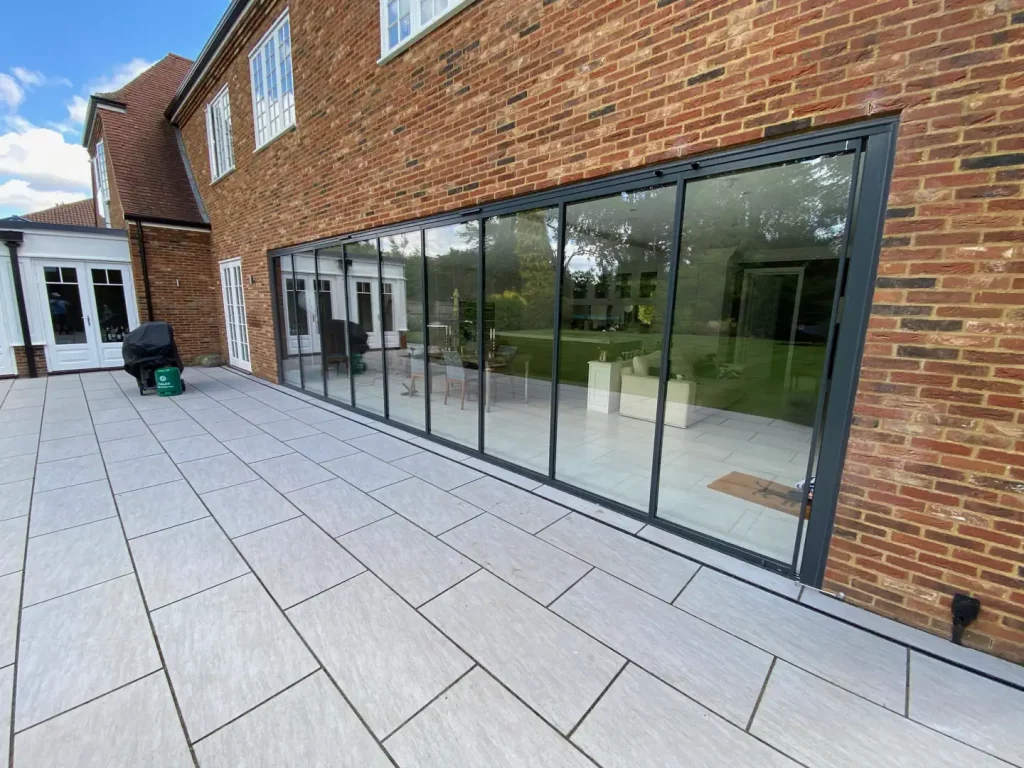
Most new bifold doors today come with double glazing as standard. This means two glass panels are sealed with air or argon gas in between, creating an effective barrier to minimise heat transfer. Double glazing provides a significant improvement in energy efficiency compared to single glazing, making it a popular choice for modern homes. The space between the panes acts as an insulating layer, helping to keep your home warmer in the winter and cooler in the summer, and reducing your energy bills in the process.
Triple glazing is another option, but it is often not worth the extra cost for the average UK home. While it offers slightly better energy efficiency, the gains are usually minimal compared to double glazing. The additional pane of glass and the associated costs can outweigh the benefits, making triple glazing a less common choice. For most homeowners, double glazing provides a good balance of cost and performance, ensuring that your bifold doors are both energy-efficient and cost-effective.
Which glazing option is best for bifold doors?
Double-glazing is essential for improved thermal efficiency in bifold doors. Laminated security glass or toughened glass is crucial for safety, as it prevents the glass from shattering into sharp shards if broken. This type of glass not only enhances security against break-ins but also provides superior soundproofing.
Low-E glass goes beyond standard double glazing, and when combined with argon gas, it increases the energy efficiency of doors and windows by about 50%. Upgrading to low-E glass can substantially lower your utility bills, whether during the hot summer or cold winter months.
What is Low-E glass?
Low emissivity glass, or Low-E glass, features a special coating that boosts the energy efficiency of windows and doors. Originally developed for colder climates to retain infrared light, it has become a cost-effective solution now widely used for significant energy savings.
At Prime Aluminium we offer Low-E glass as standard all on our bifold doors.
How to get the most out of your bifold door’s thermal benefits
If thermal performance is important to you, here are some top tips on how to maximise your bifolding door’s performance:
-
Regular Cleaning: Keep your glazed bifold door panels clean through regular maintenance. This ensures maximum sunlight can flow into your house, keeping it warm. Dirty surfaces can also reduce the effectiveness of the Low-E coating.
-
Regular Inspections: Frequently check your doors for gaps, cracks, or damaged weather stripping. Seal any issues immediately to prevent drafts.
-
Check for Drafts: On windy days, check for drafts around the door edges. If you notice any airflow, feel free to contact our team for further advice.
-
Consider Curtains or Blinds: Adding thermal curtains or thermal blinds for bifold doors can provide additional insulation, helping to retain heat during cold weather.
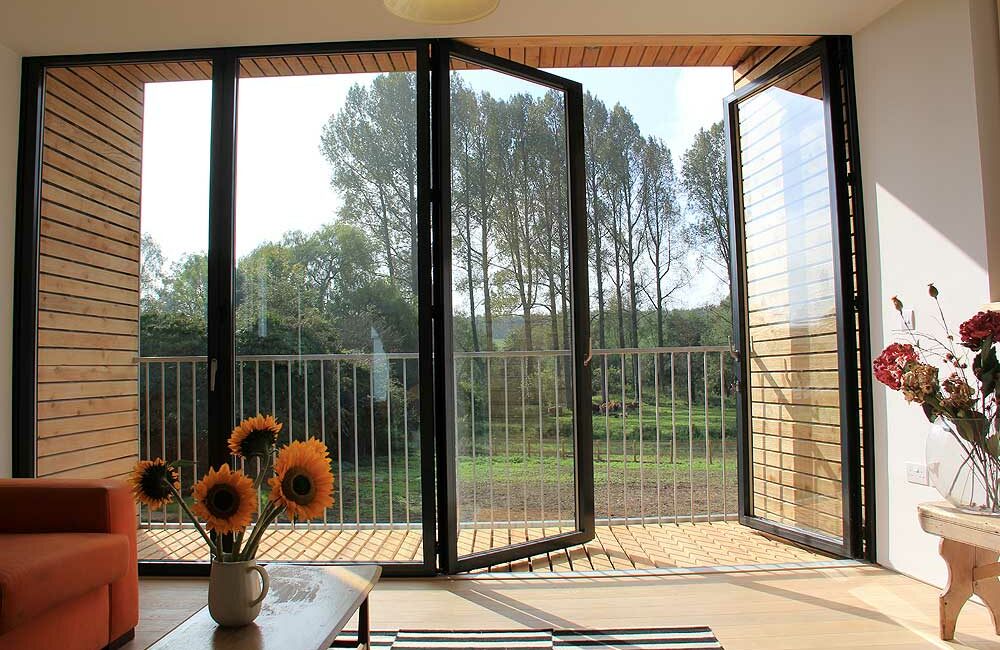
Installation tips for ensuring thermal insulation in doors
To fully benefit from your thermal insulated door, proper installation is crucial. Here are some important tips for installing a thermal bifold door:
-
Professional Installation: Hiring a trained and experienced installer ensures you get the most out of your bifold door. They pay great attention to detail, minimising issues related to alignment, operation, and thermal performance, saving you money on any costly repairs in the future.
-
Take Accurate Measurements: Ensure that precise measurements are taken for your bifold doors. Accurate measurements help prevent gaps, drafts, and other issues that could impact thermal performance.
-
Ensure Level and Plumb Installation: Make sure the bifold door is installed level and plumb. Any misalignment can impact the door’s function and potentially create gaps that will compromise thermal insulation.
-
Check Sealing Mechanisms: Ensure that the top, bottom, and side seals are properly installed to prevent drafts and maintain an airtight barrier against temperature variations.

